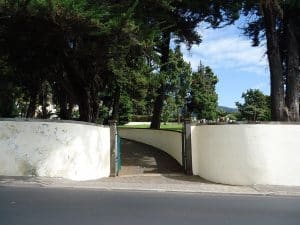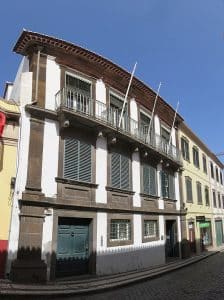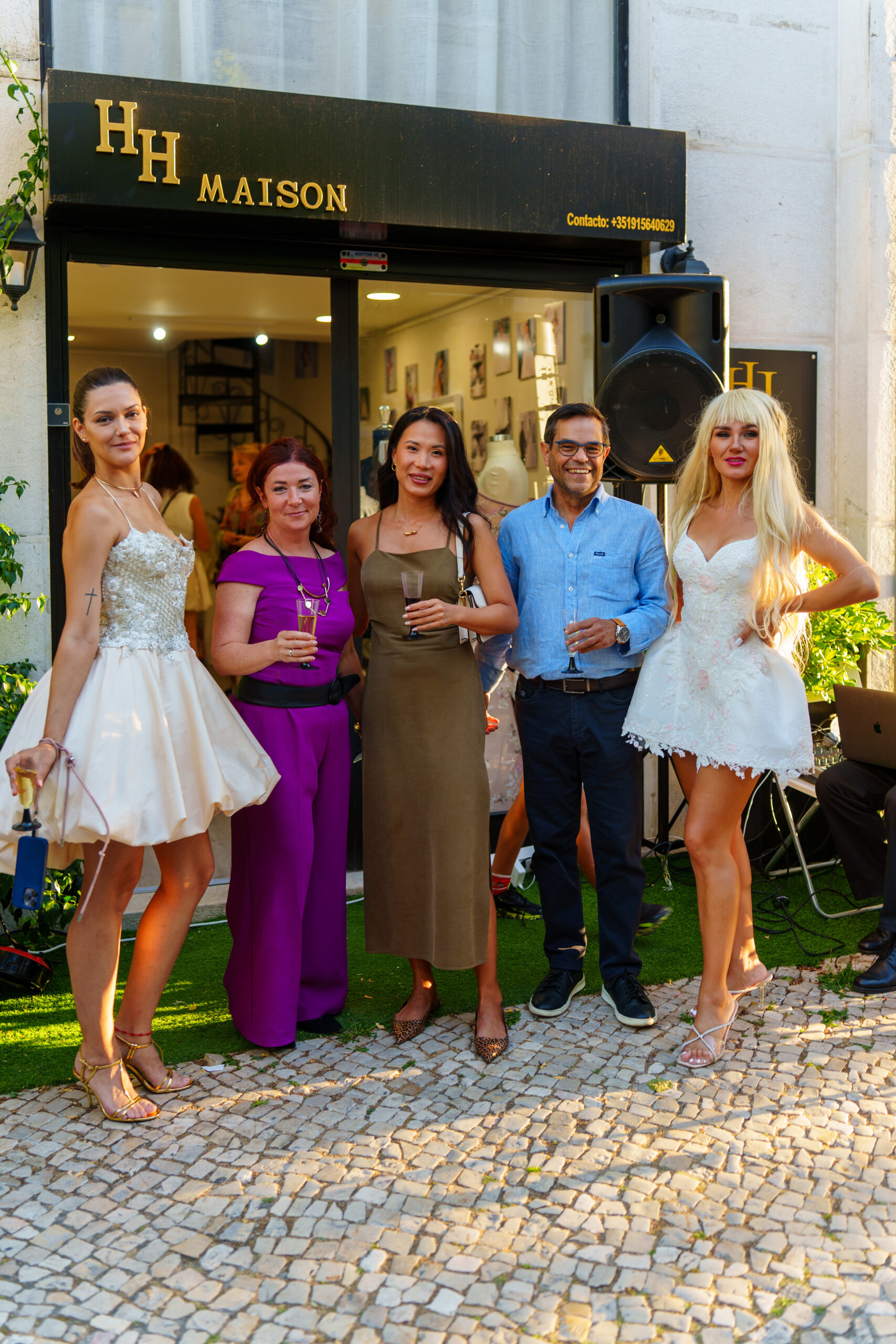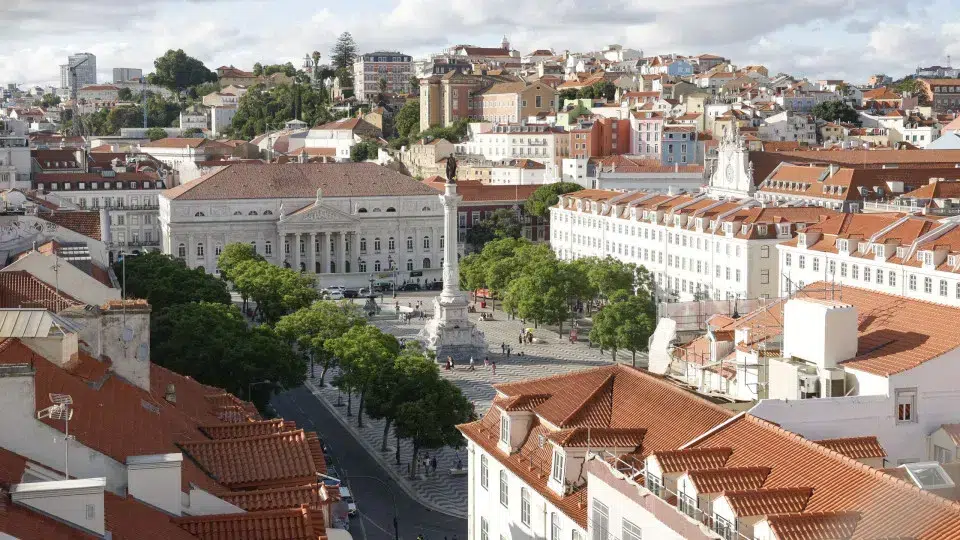Joana Abudarham – Rua dos Ferreiros
With the openness expressed by King João VI in relation to the reception of Jews in Portugal, from the 1820s onwards, several Sephardic families from North Africa settled in the Atlantic islands. This was the case of the Bensaúde in the Azores and the Abudarham in Madeira. It was precisely in the midst of this family that Joana Sultana Abudarham was born on March 18, 1880, in the townhouse on Rua dos Ferreiros where the extensive family of her grandmother Clara Abudarham, the well-known “Viúva Abudarham”, a businesswoman who owned the wine house of the same name and who had taken over the reins of the family business after her husband’s death.

Daughter of Jacob Abudarham, a distinguished merchant and intellectual, and Simy Buzaglo, well known in Madeiran society for her tireless philanthropic activities, Joaninha, as she was known until her youth, grew up surrounded by the most eclectic influences. With a remarkable intellect and the exotic beauty of an odalisque, António Nobre sang about her in the madrigal he dedicated to her in 1899, when she was 18 years old: “The girls of Madeira Island are / Tender, graceful, pale, ideal. / One gets crazy seeing the first one, / One gets crazy seeing the others, / Which is the most beautiful of Madeira Island, / if they are all the same?”, soon topped by another, of slightly lower quality, written by the Funchal native D. Domingos Teles da Gama. Domingos Teles da Gama, son of the Counts of Cascais and a great friend and companion of the poet: “- To Mrs. Joaninha – My friend Antonio Nobre says / that all of them are so beautiful / However, I regret that there is one among them. / Oh, my God! how beautiful, how elegant she is! / From the top of her head to the tip of her foot. / A great and gentle soul, / where evil has not landed. / She is so gentle, so subtle / That she enchants us all!”.
By this time, Joana Abudarham counted among her close friends other young women who would come to prominence, such as the writer Luzia and her cousin Beatriz, a notable nurse daughter of the viscounts of Geraz do Lima, the writer Laura Veridiana de Castro, and the distinguished generation of the Sauvayre sisters, constituting an elite of cultured and wealthy women with an intense intellectual and social life. A French national, Joana traveled abroad from a very young age, often in the company of some of these friends – in particular Luzia, who adored her, and with whom she often traveled through Europe – which opened horizons that the insular confinement did not allow. Like her mother and grandmother, she cared for the underprivileged, being a member of the Madeira Red Cross, in which capacity she helped the wounded of the 1931 Revolution.

An artistic personality, she was an actress in plays written by Matilde Sauvayre da Câmara, in the company of the fine flower of the society of the time, which were mostly performed for charitable purposes. She also participated in the organization of various events whose proceeds were intended to support causes such as the School of Arts and Crafts or the mutilated of the war, the Assistance to the Indigent of Madeira, and the Society for the Protection of Domestic Animals of Funchal, which she chaired for many years. Thus, for example, in February 1939 we find her, soon after the wife of the then civil governor of the District of Funchal, Maria Lívia Nosolini, heading the list of subscribers promoted by the Diário de Notícias of Funchal, for the purchase of a piece of embroidered wood to be offered to Anne Chamberlain, wife of the then Prime Minister of England, Neville Chamberlain, in recognition of the efforts she had been making in favor of world peace; and in May 1944, by donating a large sum to the relief fund for widows and orphans of the tragedy of the “São João”, a boat wrecked in the storm of the 5th of that month, when it was fishing for tuna to the sides of Porto Santo, as reported by Diário de Notícias in the edition of the 21st of that month. We also believe that this is the “Joaninha” that D. Francisco de Castro e Almeida, father of his friend Laura Veridiana, refers to in his poem “O Cotillon Pic-Nic”, published in this Diário in August 1908, regarding the launch of the new Lactário da Assistência a Crianças Fracas, founded by D. Eugénia de Canavial, describing the incredible amount of beautiful tissue paper flowers of all colors that “Joaninha” had made to offer in exchange for a donation to the lactário during the “Cotillon Pic-Nic”.
In October 1903, Joana, who had tragically lost her father just over a month earlier, married Ensign António Bettencourt da Câmara, from an old Madeiran noble family, itself with New Christian roots, the Matos Coutinho. António died prematurely, leaving her a widow with two daughters. Joana then moved with her mother to Quinta de São Roque, whose halls regularly hosted the intellectuals of Funchal, in soirees and gatherings organized by her, which remained in memory. He died on that farm at the age of 96, on January 8, 1976, being the last person to be buried in the Israeli cemetery of Funchal, next to his parents. Interestingly, his paternal great-grandmother, Reina Pariente, had been precisely the first person to be buried in that cemetery, in February 1854, thus marking an end of the cycle of this Hebrew community, which for a century and a half had marked Funchal so vividly.
The house of Quinta de São Roque unfortunately no longer exists, demolished around 2004 by the University of Madeira, with a view to the expansion of the university complex, which never materialized. The residence where he was born, on the other hand, classified as a property of municipal interest in 1999, still marks today, with its beautiful frames of volcanic stonework, the urban scenery of Rua dos Ferreiros, where the Institute of Investments and Water Management has been operating since about 2000. In a curious coincidence, the building was originally erected in the 17th century precisely by a family of Christian-Nova origin, the Lopes Vila Real.








